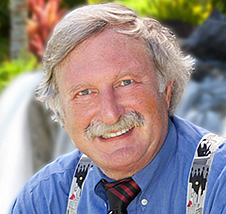Mind-Body Techniques For Pain

Most pain can be effectively treated. The problem is lack of physician education and training in how to assess and treat pain. But by using a mix of biochemical (medications, herbals, and nutrients), structural, biophysics and mind-body therapies, most pain can be relieved.
Unfortunately, most physicians are only taught pain treatments consisting of Tylenol, antiseizure medications, and ibuprofen-related medications called NSAIDs. Unfortunately, though safer than being in chronic pain, NSAID medications trigger 50,000 excess and preventable US deaths yearly. I say preventable as research has shown that natural therapies, such as an herbal mix called Curamin®, is as effective as Celebrex in three head-to-head studies. Glucosamine plus chondroitin is also about as effective as these medications for arthritis.
Worse still, physicians are taught to resort to surgery all too frequently in situations where surgery is not necessary or helpful.
To be fair, there are times when standard medical treatments are prudent and can be life-saving and beneficial. But sadly, this is often not the case for pain management.
Mind-Body Techniques
There are countless mind-body techniques that can be helpful. For starters, pain and suffering are distinct from each other. Pain is simply a nerve signal to your brain, like hot, cold, fuzzy, and other signals. While suffering reflects how we interpret the pain signal and how much attention we should pay to it. A few mind-body techniques to begin with include:
- Distraction from the pain can be as effective as medications. For instance, listening to enjoyable music has been scientifically shown to reduce the feeling of pain.
- Using hypnosis can reduce the volume of the pain you feel.
- Essentially, anything that distracts you can help.
Painful memories and experiences we all accumulate during our lives are stored in different areas of our psyche and body. Acknowledging and releasing these can also be powerfully healing. For example:
- Most massage therapists have had the experience of releasing a tight painful muscle for a client and watching as the memory of an old emotional trauma comes to the surface and is released. Muscles can, in a sense, store memory. Structural therapies such as massage and myofascial release can help. But a very simple thing that people can do is to allow their body to go through trembling when it feels like doing so. This also releases the trauma of the muscle memories. But instead, people usually try to block themselves from trembling because they feel silly letting it happen. That's where the expression “shake it off” comes from. It's quite effective at releasing old muscle memory traumas that can trigger pain. Just combine it with music therapy. Listening to the Taylor Swift song "Shake It Off" at the same time would be a good choice :-)
- Pain can sometimes be brought on as a byproduct of trying to avoid painful memories. Instead, when an old painful feeling arises, just let yourself feel it. Then when the feeling feels complete, let it go. The pain will often go away with it, or at least become less and less intense each time you become conscious of that memory. Basically you want to “wash, rinse and repeat” over time until it fades away. There is nothing you need to do with the feeling except feel it. When it feels like it is complete for the moment, let it go. It may help to then switch your attention elsewhere, to something that feels good.
- Stop identifying yourself with the pain. Although in the beginning it can be helpful to own the pain and secondary limitations caused by it, the next stage is to recognize you are not the pain. Identify with your joyful passions, rather than as being a person with chronic pain. Using mindfulness techniques to be in the moment can often minimize the pain. An excellent book to guide you on this is “The Power of Now” by Eckhart Tolle. This is a key book recommended by Oprah Winfrey because of its power for transformation.
Resources for Next Steps
These are just the tip of the iceberg. But they're good places for people to begin. The next stages could include resources like:
- Limbic system resetting with techniques such as DNRS or ANS REWIRE, which helps fibromyalgia and sensitivities in general.
- Trauma/PTSD release. Somatic Experiencing is a good way to begin.
- EFT (Emotional Freedom Technique) Is a good way to eliminate the stored emotional energies.
How to get pain-free, including more on mind-body techniques, is discussed at length in my book From Fatigued to Fantastic (Penguin/Avery, 2021).

Jacob Teitelbaum, M.D. is one of the most frequently quoted post viral CFS, fibromyalgia, energy, sleep and pain medical authorities in the world. He is the author of 12 books including You Can Heal from Long Covid, the best-selling From Fatigued to Fantastic!, Pain Free 1-2-3, The Complete Guide to Beating Sugar Addiction, Real Cause Real Cure, The Fatigue and Fibromyalgia Solution, and the popular free Smart Phone app Cures A-Z. He is the lead author of eight research studies and three medical textbook chapters on effective treatment for fibromyalgia and chronic fatigue syndrome. Dr. Teitelbaum appears often as a guest on news and talk shows nationwide, including past appearances on Good Morning America, The Dr. Oz Show, Oprah & Friends, CNN, and FoxNewsHealth.
Websites: Vitality101.com | EndFatigue.com
Facebook Support Group: Recovering from Fibromyalgia, Chronic Fatigue, and Long COVID
Facebook Page | Instagram
